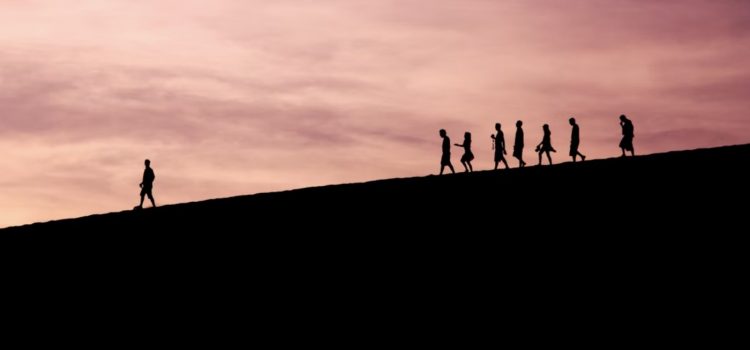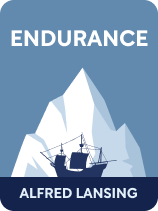

This article is an excerpt from the Shortform book guide to "Endurance" by Alfred Lansing. Shortform has the world's best summaries and analyses of books you should be reading.
Like this article? Sign up for a free trial here .
How did Ernest Shackleton step up as a leader when the Endurance sank? What are lessons on leadership to take away from Shackleton’s experience?
In 1914, Ernest Shackleton and 27 other men set out on the Endurance ship to Antarctica, but the ship became trapped in ice. Shackleton effectively led his team through a time of crisis, and all the men survived because of his leadership skills.
Learn more about Ernest Shackleton’s leadership skills from Alfred Lansing’s book Endurance.
Lessons on Leadership from Ernest Shackleton
Leadership experts who have studied Shackleton’s story highlight some lessons for leadership in times of crisis that can be learned from the Ocean Camp period:
- Share vulnerabilities carefully. During this time of uncertainty in which the plan to get to Paulet Island was the first choice, but unlikely to be successful, Shackleton took care to confide his doubts only to his second-in-command and in his diary.
- Embody confidence. The rest of the crew saw Shackleton walk and talk confidently. When the Endurance sank and the option of going back to the ship to retrieve food was gone, he calmly gathered his crew and simply announced that, now that the ship and food stores were gone, they would have to go home. His optimism and confidence kept the men confident as well.
Below, we’ll look at how Ernest Shackleton’s leadership skills were effective in desperate times.
Managing the Crew
While the crew lived on the ice floes, Shackleton’s main worry was losing control of the men and therefore the situation. He felt it was his duty to bring them to safety, and he tried to anticipate anything that might interfere with the harmonious cooperation that goal required.
He managed the personalities of the crew members to avoid friction and demoralization. For example, he knew which man needed to feel important, so he consulted him on key decisions. He knew which ones had annoying personalities, so he distributed them between his own tent and the tent of his second-in-command, so they could keep them under control.
Shackleton tried to balance the pressure he felt to keep the men safe with the need to get close to them and show them he wasn’t above sharing the daily chores and suffering the same discomfort. He tried to bond with them, but he was also strict with his orders, especially when they pertained to avoiding unnecessary risks, such as venturing far from camp to go hunting.
(Shortform note: Leadership experts note that Shackleton’s prioritization of team morale and rapport was key to their survival. He created multiple opportunities for bonding, including pulling interesting conversation topics from an encyclopedia he had retrieved from the ship and asking the crew to play the banjo, which he called “mental medicine.” He also made sure that everyone knew they were all equals, and he created chore calendars where anyone, whether they were officers, scientists, or low-ranking sailors, shared the same responsibilities for keeping their living quarters clean and keeping a lookout for changes in the ice and water.)
Managing the Restless Crew
Throughout their stay in the subsequent camps, the men were restless and irritable, and they quietly questioned Ernest Shackleton’s leadership. For example, they wanted to continue hunting and storing meat in case they were still stranded by the time winter began. However, Shackleton ordered them not to store any more meat. Continuing to store meat would have been an admission that they would have to winter there, which he refused to accept. He was optimistic and believed his men should be as optimistic as he was; he took pessimism as a sign of distrust.
Days later, Shackleton ordered most of the dogs killed so they wouldn’t have to use their own food rations to feed them. Many of the men felt the loss deeply and blamed Shackleton’s lack of food planning for the tragedy.
Killing the dogs didn’t resolve the problem of a diminishing food supply, and hunger increased as their rations declined each day. Some men began to make jokes about cannibalism. They held off on eating the remaining dogs in case they needed them to make a sledge trip back to Ocean Camp to retrieve food stores they had left there. Hunger also made the cold more biting because they had fewer daily calories to warm their bodies. To make matters worse, most meals were cold so as to save the remaining blubber (used as cooking fuel) for emergencies.
Shackleton Made a Difficult Sacrifice
Ernest Shackleton’s leadership skills came into play when he had to make a difficult sacrifice: killing the dogs for food. Since a trip to Ocean Camp for food was impossible after the breakup of their floe, they killed and butchered all the dogs and puppies for meat. Some of the men were upset but knew it was necessary. They enjoyed the dog meat for a change after months of eating seals and penguins.
Strategic Decision-Making Is a Key Leadership Skill
One of Shackleton’s greatest leadership strengths was the ability to pivot to new plans and tactics quickly and often to keep making progress toward his goal: bringing all of his men back home alive. Whether it was leaving the ship, trekking through the ice, setting up camp, or getting on the boats, his actions were all aimed at achieving the ultimate goal. His men knew this, too, which allowed him to make decisions with the confidence that they would trust him and follow his lead.
Leadership experts argue that his flexibility in terms of plans and tactics reflects an understanding of “strategy as strategic decision-making,” which sees the ability to make strategic decisions as the key capacity of successful organizations. In the business world, it refers to companies making the right decisions quickly to adapt and survive in high-velocity markets which, much like the Antarctic environment, are unpredictable and change daily.

———End of Preview———
Like what you just read? Read the rest of the world's best book summary and analysis of Alfred Lansing's "Endurance" at Shortform .
Here's what you'll find in our full Endurance summary :
- The story of the Endurance, an expedition ship that sunk on its way to Antarctica
- The crew's journey of survival and their search for rescue
- How Ernest Shackleton lead the crew to safety






